17 Fascinating Fox Facts About Nature's Tricksters
Foxes belong to the same family as wolves, coyotes, and domestic dogs. However, as our fox facts explore more, their unique characteristics (like their ventral spit pupils and upright triangular ears) and peculiar behaviors distinguish them from other canines.
The Silver Fox, for example, are famously known for their beauty and brains. Silver foxes are highly valued for their luxurious fur. Additionally, they are highly intelligent, which is seen in their usage of clever tactics during hunting.
In this list of fox facts, we will learn these elusive animals' biology, behavior, and adaptations. We'll also tackle some factors that threaten their populations and survival.
For more foxy inspiration, you can read our fox quotes to read about what people have to say about these mischievous canines. or read up on our dog facts for more from the same family.
17 Facts About Foxes
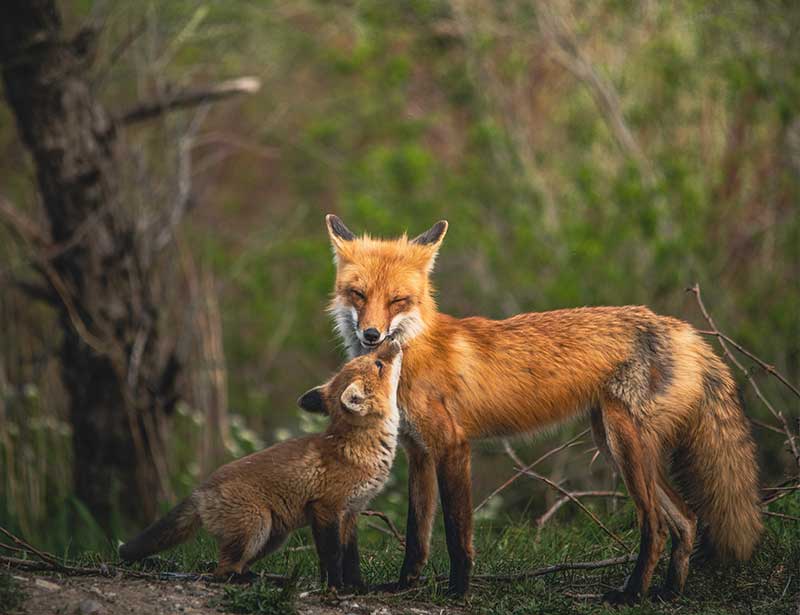
1. Foxes belong to the Canidae family.
First in our fox facts list is that foxes are part of the canine family. As members of the Canidae family, foxes share an intriguing lineage with other notable animals like the domestic dog, wolf, and jackal. They possess some common traits with their relatives, such as an exceptional sense of smell and remarkable agility.
However, foxes stand out with their bushy tails, slender muzzles, retractable claws, and upright triangular pointed ears, which show their unique evolutionary journey. Despite being related to some of the largest and most potent carnivores, foxes are the smallest members of the Canidae family.
For instance, the Fennec Fox weighs a mere 1.5 to 3.5 pounds, making it the smallest fox species. Even the largest species, the Red Fox, only reaches up to 15 pounds.
There are 12 fox species of true foxes belonging to the genus Vulpes. Various adaptations enable them to inhabit diverse ecosystems, from the frigid Arctic tundra to the scorching deserts of North Africa.
Some well-known fox species include the Red Fox, Arctic Fox, Fennec Fox, and Gray Fox (also Grey Foxes in some literature). The U.S. alone is home to 4 different species: Red Fox, Gray Fox, Swift Fox, and Kit Fox.
Read more: Types of Foxes.
2. The Red Fox is the most widespread species.
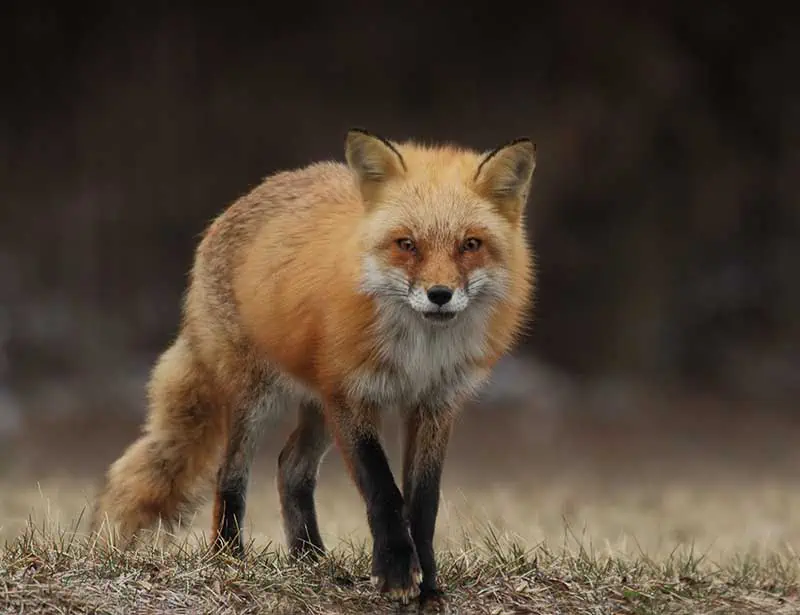
Red Fox is the most populous and widespread fox species; the second is the Kit Fox. Red Foxes, scientifically known as Vulpes vulpes, are a cosmopolitan species with an impressive geographical range that spans multiple continents, such as North America, Europe, Asia, northern regions of Africa, and even the Arctic Circle.
These foxes typically live everywhere - from deserts and grasslands to forests and Arctic tundras. In addition to thriving in natural environments, Red Foxes have demonstrated remarkable adaptability in human-dominated landscapes1.
Fox sightings have increased as these cunning creatures have been spotted navigating urban areas, capitalizing on cities' abundant food sources and shelter options. They sometimes dig underneath tree roots or garden bushes, where you can find their dens.
These urban foxes' ability to adapt to their diet is a significant factor in their successful urban integration. Red foxes can consume rodents, rabbits, birds, insects, fruits, and vegetation.
3. Foxes have a reputation for being cunning and sly.
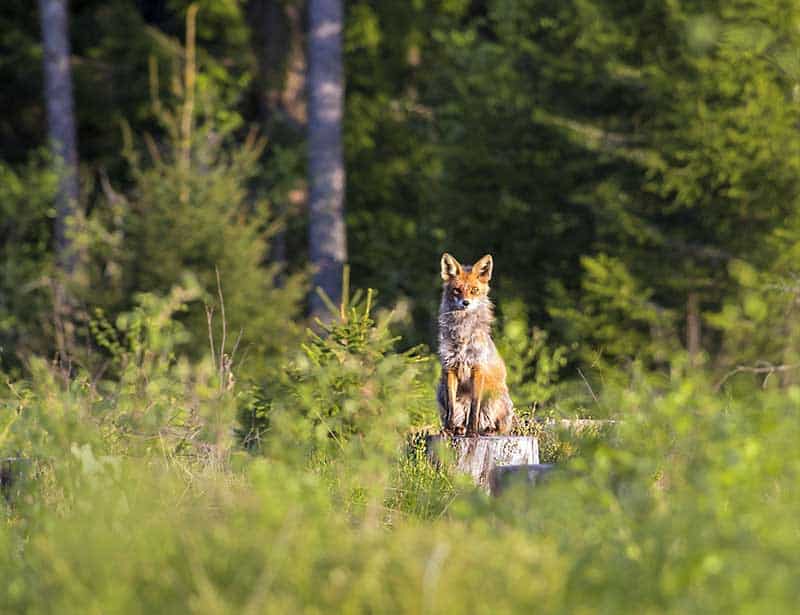
This is one of the most famous fox facts, as many use the phrase "sly as a fox." This phrase, however, describes one of the most fascinating traits of foxes: intelligence.
One notable example of their wit involves their usage of the earth's magnetic field to hunt. Through this, they can locate the direction of their prey.
A grey fox, for example, can navigate challenging environments and outwit predators and prey alike. Their intelligence is also the reason why many people want a pet fox. However, there are specific laws that pertain to access to pet foxes, and they vary by state.
Furthermore, foxes appear in tales from various cultures, often embodying wisdom and ingenuity. For example, the Kitsune in Japanese folklore is a shape-shifting fox known for using its intelligence to deceive humans. Similarly, Native American stories often depict foxes as clever trickster figures.
In contemporary popular culture, foxes are portrayed as tricksters or thieves. Characters like Disney's Robin Hood and Roald Dahl's Fantastic Mr. Fox exemplify the sly and cunning nature associated with foxes. The sly fox, ever-endearing protagonists often use their wit and dexterity to outsmart adversaries, highlighting the unique characteristics of their real-life counterparts.
4. Foxes make 40 different sounds.
Next in our top fox facts is their remarkable vocal range. Foxes can communicate using around 40 different sounds3. Among these vocalizations, their eerie and captivating scream-like howl stands out.
This distinctive call travels long distances, allowing foxes to communicate across vast territories. Often mistaken for a human in distress, the howl serves multiple purposes, such as male foxes attracting mates, warning off intruders, and asserting dominance over their surroundings.
In addition to the howl, foxes, particularly red foxes, use gekkering. This is a rapid series of guttural chattering noises. They use this during disputes or playful interactions, helping to establish and reinforce social bonds within their group.
Although it can be a sign of aggression, gekkering often prevents physical altercations, as foxes use vocal duels to defend their territory from potential rivals. These noisy confrontations enable them to settle disputes with minimal harm to themselves.
5. Foxes use their bushy tails for balance and communication.
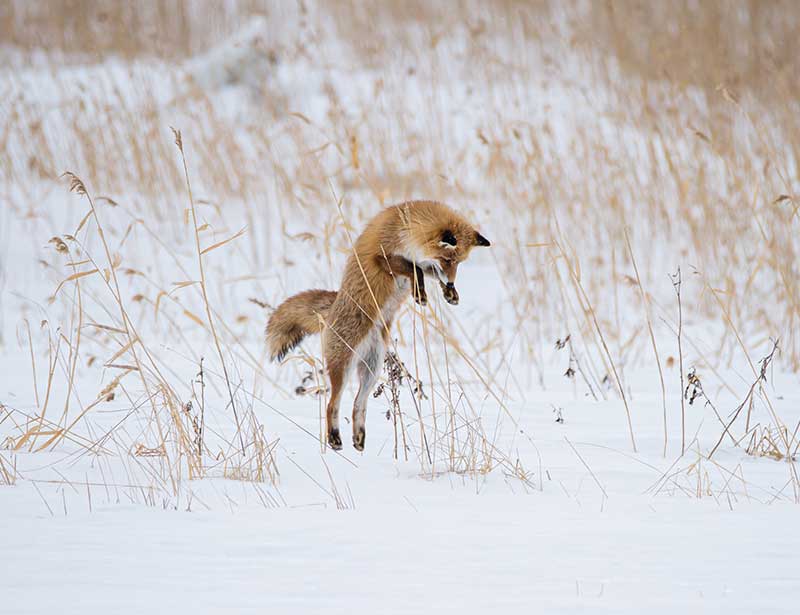
You might have seen these bushy-tailed animals trotting on multiple occasions. Foxes sport bushy tails, often called "brushes," which serve multiple essential purposes. One key function is maintaining balance. As foxes dash through undergrowth or leap over obstacles, their tails act as counterbalances, helping them adjust their movements and stay upright.
This is especially vital for the agile red fox, capable of reaching up to 30 miles per hour and boasting exceptional jumping skills. When foxes climb trees or navigate steep, rocky terrain, their tails demonstrate their stabilizing role.
Beyond balance, foxes use their tails to communicate with their fellow dog family. During social interactions, they employ various tail movements to express different messages, such as submission, aggression, playfulness, and excitement.
Additionally, fox tails contribute to visual signaling, particularly in low-light conditions. Some species, like the red fox, have distinctive white tail tips, easily spotted in twilight hours or dense foliage.
This visual cue allows foxes to track each other's whereabouts, stay connected during group hunts, and signal intentions without relying on potentially prey-alerting vocalizations. Thus, the bushy tail of a fox is not just a decorative feature; it's an indispensable tool for survival and social cohesion in the wild.
6. Foxes are smelly.
Notorious for their distinctive odor, foxes release a sickly, musty scent that pervades their surroundings. This potent aroma stems from specialized glands located at the base of their tails, present in both male and female foxes.
The scent produced by foxes is essential for communication among their kind4. By marking their territories, they warn off rivals and other wild animals. Furthermore, the scent helps them identify individual foxes, distinguishing friends from foes.
The importance of this distinct aroma becomes even more pronounced during mating season, as it assists potential mates in finding each other and determining compatibility. While the musty smell may be bothersome for people living near fox habitats, it remains an integral aspect of the intricate social structure that shapes the lives of these fascinating creatures.
7. Foxes are omnivores with a diverse diet.
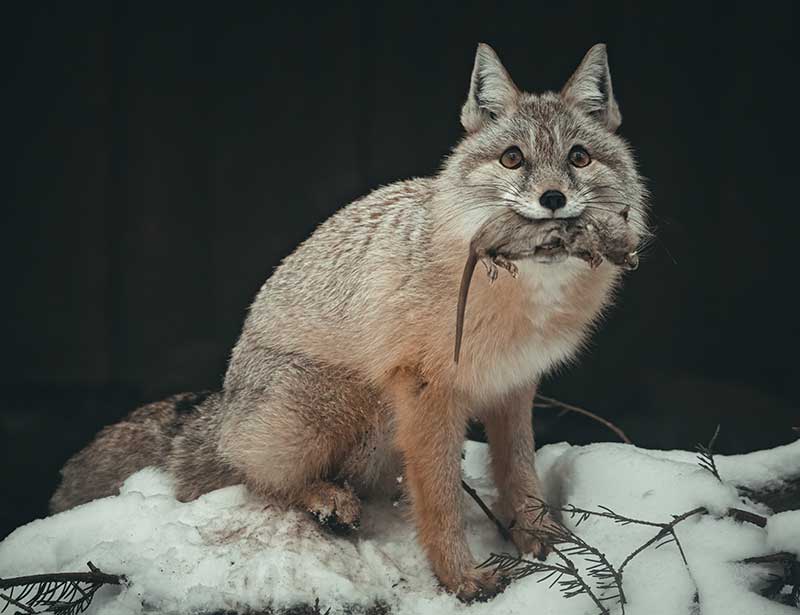
Foxes, as omnivores, boast a diverse and adaptable diet. Their primary food sources include small mammals like mice, voles, and rabbits, which they expertly hunt using their sharp senses and nimble movements.
Additionally, these resourceful creatures consume a wide range of birds, insects, and even eggs. Their diet also includes fruits and vegetables, such as berries, apples, corn, and peas. Foxes demonstrate remarkable resourcefulness in their feeding behavior2, seamlessly switching between hunting and scavenging based on food availability.
Foxes often venture near human dwellings, rummaging through garbage and compost heaps for leftovers and discarded scraps.
8. Foxes have incredible hearing abilities.
Foxes rely on their outstanding hearing abilities as a key survival tool. They have a remarkable ability to detect low-frequency sounds. They can hear a watch ticking 36 meters away and hear rodents underground. This also enables them to locate prey, even when hidden underground.
This exceptional skill proves especially useful when hunting small animals like mice and insects, as the fox's sensitive ears can pick up the faintest vibrations and rustling noises. The unique structure of a fox's ears significantly enhances its hearing capabilities. Each ear has extra muscles, allowing it to rotate independently and swiftly focus on the direction of a sound.
By rotating their ears, foxes can accurately triangulate the exact location of a sound source, increasing their chances of successfully capturing prey. This ability to pinpoint sounds helps them avoid danger and detect the subtle noises emitted by predators or potential environmental threats.
Foxes' remarkable hearing abilities don't just aid them in locating prey; they also play a vital role in communicating with other species members. Their highly sensitive ears can detect and respond to calls from great distances, ensuring they remain well-informed of their surroundings even in environments with limited visibility, such as dense vegetation or nighttime conditions.
9. Foxes engage in play behavior throughout their lives.
Most fox species embrace play as a vital part of their lives, from their early days as kits to their adult years. Foxes playing comes in different forms, such as chasing, pouncing, and wrestling, and it helps them develop essential social and hunting skills. As they frolic with siblings or friends, these lively interactions create strong bonds, allowing foxes to understand and work within their social group's complex hierarchy.
Pouncing and stalking mimic the hunting techniques they'll later use to catch prey. Likewise, play fighting among baby foxes (called cubs), and juveniles lets them practice defensive and offensive strategies, which is crucial for future encounters with potential threats. These seemingly carefree moments significantly affect a fox's cognitive and physical development.
Adult foxes continue to engage in playful behavior even beyond their juvenile years. During mating season, these spirited interactions help build trust between potential partners and establish social hierarchies among rivals.
10. Foxes are solitary animals and primarily nocturnal.
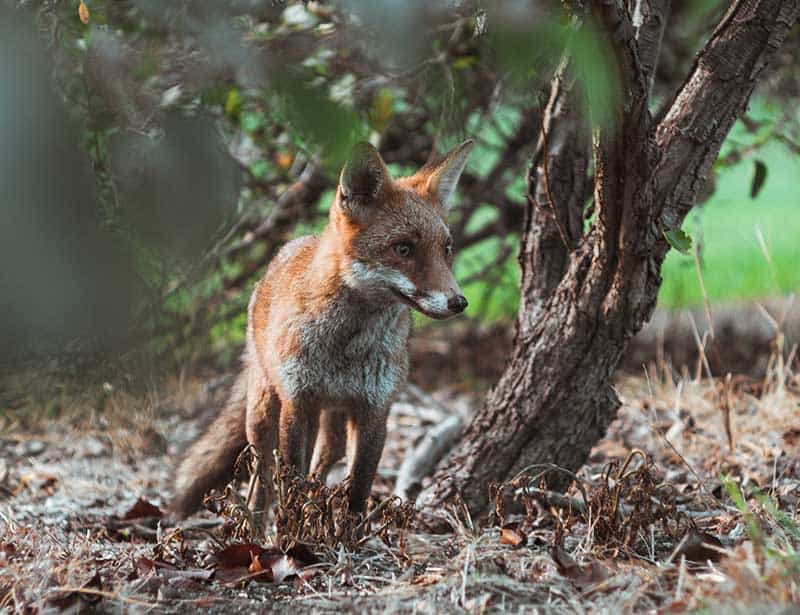
Like the Gray Foxes and Arctic Foxes, Foxes are not pack animals. Gray Foxes, in particular, are not observed as frequently as Red Foxes because they tend to be more nocturnal.
Foxes live by themselves in small family groups. Foxes generally prefer solitude, steering clear of encounters with their own kind. This preference for a solitary lifestyle can be attributed to their need to establish and defend individual territories, avoiding competition for resources.
Throughout the year, each fox leads an independent life, ensuring its survival by hunting for food, maintaining its den, and marking its territory with scent glands. However, the arrival of mating season sparks a temporary shift in fox behavior.
During this time, males and females form pairs, seeking each other out for the essential task of reproduction. Once the mating season is over, the foxes return to their solitary existence, with the female fox, or vixen, primarily raising the newborn kits.
Furthermore, they are predominantly nocturnal, with their most active periods occurring at dawn and dusk. Darkness offers them better chances to hunt prey undetected and conceals them from predators and humans.
11. Foxes mate once a year and form temporary pairs.
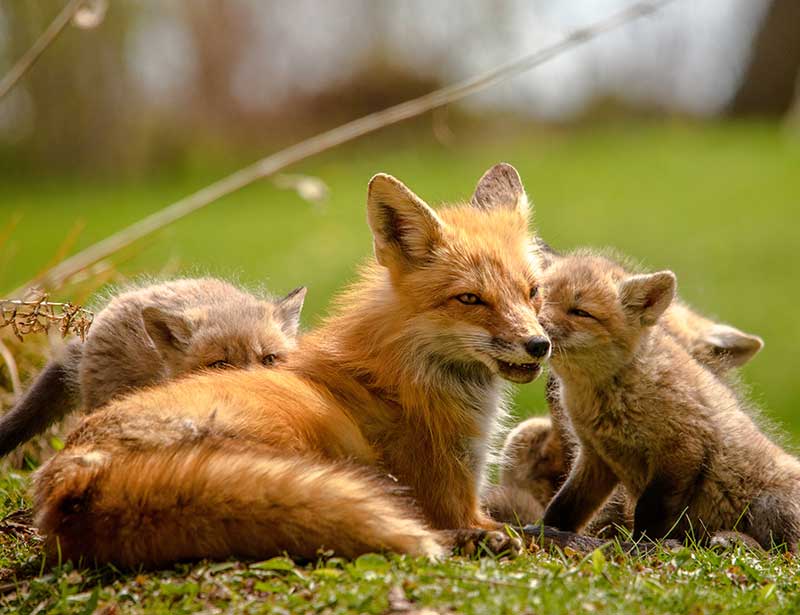
During the fox breeding season, which typically takes place between December and February, vixens and dog foxes form temporary pairs to mate and care for their soon-to-be-born offspring6.
The vixen focuses on preparing a safe and secure den for her young, often choosing ideal locations for complex burrow systems, logs, or even abandoned buildings. This attention to detail highlights her dedication to providing a nurturing environment for her kits.
Meanwhile, the dog fox plays a vital role in supporting the vixen and their future offspring. He goes hunting every night, bringing back a variety of food sources like rodents, birds, and insects to nourish his mate and, later, their young. This teamwork allows the vixen to concentrate on caring for her kits while the dog fox ensures the family stays well-fed and protected from potential threats like harm from other foxes.
As the kits grow and gain independence, the bond between the vixen and male fox weakens, eventually leading to their separation. Although their partnership is brief, the intricate dynamics of fox mating and parenting ensure their survival in the wild.
12. Vixens give birth to litters of 4-6 kits.
Vixens, the female foxes, undergo a fascinating process when giving birth to their young. As the birthing season approaches between late March and early April, the expectant mother readies a cozy den for her litter of 4-6 kits. Barely weighing 100 grams each, these tiny creatures come into the world blind and helpless, with only a thin layer of fur for protection.
During their first few weeks, the cubs depend entirely on their mother's warmth, care, and nourishment. By the time they're 4-5 weeks old, the kits' eyes have fully opened, and they start exploring outside the den under their parents' watchful gaze.
Both parents teach their young essential survival skills such as hunting and navigation during this time. As the kits grow and gain independence, they play with their siblings, which helps develop their social and predatory skills.
At around 4-6 months old, the young foxes are ready to leave the safety of their family group and establish their own territories, embarking on their individual journeys in the wild.
13. The father of evolution discovered a fox species
In a rare intersection of evolutionary theory and wildlife discovery, it was none other than Charles Darwin who first identified Darwin's Fox during his historic voyage on the HMS Beagle.
This small and elusive creature, also known as Lycalopex fulvipes, is native to the dense temperate forests of Chile. Remarkably, most of the estimated 2,500 Darwin's foxes today reside solely on Chiloé Island, with a minor population found in Nahuelbuta National Park.
Unfortunately, Darwin's Fox is endangered due to habitat loss, domestic dog attacks, and human encroachment.
14. Flying Foxes are not Foxes. They're Bats!
Despite their misleading name, Flying Foxes are not foxes at all; they are actually the world's largest species of bat. The term "flying fox" is believed to originate from the early European explorers who were struck by their fox-like faces and large size.
However, this myth is not to be confused with the bat-eared fox, native to the African savanna; it owes its name to its large, bat-like ears.
Related read: Bat Facts.
15. The Arctic Fox has a unique adaptation to survive in cold climates.
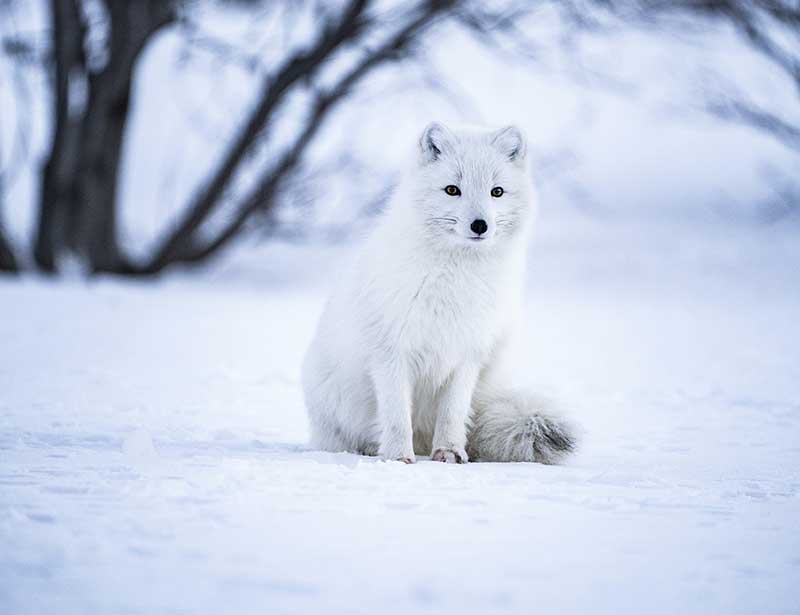
The Arctic Fox has developed remarkable adaptations that enable it to thrive in some of Earth's most severe conditions. One particularly unique adaptation is its thick, double-layered coat, which offers the insulation needed to withstand frigid temperatures.
This coat has a dense underfur that traps insulating air and long, water-resistant guard hairs to protect the fox from the elements. Thanks to this ingenious adaptation, the Arctic Foxes can endure temperatures as low as -70°C (-94°F), which few other animals can achieve.
The coat provides essential insulation and camouflage, helping the Arctic Fox hunt and evade predators—the fur color changes with the seasons, adapting to the ever-changing Arctic landscape.
In winter, the coat turns a pristine white, allowing the fox to blend seamlessly into the snowy terrain. As the snow melts and the Arctic tundra reveals shades of brown and grey, the Arctic Fox's coat transitions to a brownish-grey hue, matching its surroundings.
This impressive color-changing ability gives the Arctic Fox a valuable advantage in its ongoing struggle for survival.
16. Fennec Foxes have large ears to help dissipate heat.
The Fennec fox is a fascinating creature inhabiting the rugged Sahara Desert and other dry areas in Northern Africa. It has a remarkable adaptation that allows it to survive in the searing hot and inhospitable environment - its ears.
The Fennec Fox's ears are unusually large, measuring up to 6 inches (15 cm) in length. They serve a crucial purpose beyond their distinctive appearance - they aid the foxes in keeping cool amidst the scorching desert temperatures.
The extensive surface area of their ears, combined with the dense network of blood vessels close to the skin, is key to their heat-dissipating ability. As blood circulates through these vessels, the excess body heat transfers to the surrounding environment, a process known as thermoregulation.
This efficient cooling mechanism allows Fennec Foxes to tolerate temperatures as high as 126°F (52°C), ensuring they can survive and flourish in their desert habitat.
Not only do their sizeable ears help the Fennec Fox stay cool, but they also offer another survival advantage: enhanced hearing sensitivity. This adaptation enables these foxes to locate prey, such as small rodents and insects, hidden beneath the desert sands and detect predators from a considerable distance.
Additionally, their furry feet insulate them against the hot sand, providing an extra layer of temperature regulation.
17. Foxes face numerous threats, including habitat loss and fox hunting.
Habitat loss, primarily due to human development, poses a significant threat to fox populations worldwide. This habitat loss pushes foxes into closer contact with humans, resulting in limited resources and increased competition among the species.
For example, The Sierra Nevada red fox, a species once abundant in the high mountain regions of California, is tragically now one of North America's most endangered mammals. This rare fox desperately struggles for survival with fewer than 50 individuals estimated to be left in the wild.
Fragmented habitats intensify these challenges as isolated fox populations struggle to find suitable mates, causing a decline in genetic diversity and overall population health. Apart from habitat loss, foxes face the ongoing threat of fox hunting for pest control and the fur trade5.
Farmers and landowners often perceive foxes as a nuisance because they prey on livestock and poultry. Consequently, they target fox populations with methods such as poisoning, trapping, and shooting to deter or eliminate foxes from areas where they are considered pests. However, these methods can unintentionally harm other wildlife and ecosystems while potentially leading to the inhumane treatment of the foxes.
The fur trade also drives the hunting of foxes, as their pelts (especially those from silver foxes) are highly valued for their warmth, softness, and distinctive coloration. Fox fur finds its way into various garments and accessories, fueling demand for hunting and trapping among both commercial and recreational fur trappers.
Although certain countries have implemented policies and limits to promote sustainable hunting, the issue of illegal and unregulated hunting continues to pose a significant threat. With the ongoing effects of habitat loss and hunting on fox populations, it is essential to work collaboratively on conservation strategies, regulatory actions, and public awareness initiatives to protect these fascinating animals and their habitats.
Related: To further explore the animal kingdom, check out some of the other animals that start with F.
| 1 |
Harris, S., & Baker, P. (2001). Urban fox (Vulpes vulpes) population estimates and habitat requirements in several British cities. Journal of Zoology, 255(2), 269-274. |
| 2 |
Cavallini, P., & Lovari, S. (1991). Environmental factors influencing the use of habitat in the red fox, Vulpes vulpes. Journal of Zoology, 223(3), 323-339. |
| 3 |
Macdonald, D. W., & Sillero-Zubiri, C. (Eds.). (2004). The biology and conservation of wild canids. OUP Oxford. |
| 4 |
Gorman, M. L., & Trowbridge, B. J. (1989). The role of odor in the social lives of carnivores. In J. L. Gittleman (Ed.), Carnivore behavior, ecology, and evolution (pp. 57-88). Ithaca, NY: Cornell University Press. |
| 5 |
Baker, P., Harris, S. & Webbon, C. Effect of British hunting ban on fox numbers. Nature 419, 34 (2002). |
| 6 |
Macdonald, D. W., & Reynolds, J. C. (2008). Red fox (Vulpes vulpes). In Mammals of the British Isles: Handbook (4th ed., pp. 515-523). The Mammal Society. |
Isabela is a determined millennial passionate about continuously seeking out ways to make an impact. With a bachelor of science degree in civil engineering with honors, Isabela’s research expertise and interest in artistic works, coupled with a creative mindset, offers readers a fresh take on different environmental, social, and personal development topics.
Fact Checked By:
Ben Hart, BSc.

